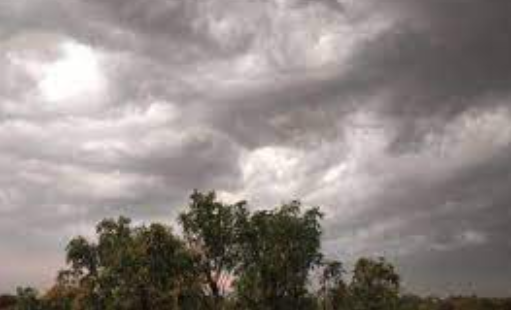Understanding Partly Cloudy Weather Forecasts

Table of Contents
Deciphering the "Partly Cloudy" Forecast
The term "partly cloudy" lacks a strict, universally agreed-upon numerical definition. Unlike a "clear" sky (0% cloud cover) or an "overcast" sky (100% cloud cover), "partly cloudy" is subjective and implies a significant portion of the sky is clear, but with noticeable cloud coverage. Think of it as occupying the middle ground, often representing between 1/4 and 3/4 cloud cover. Remember, weather forecasting is inherently complex, and different meteorologists might interpret similar atmospheric conditions slightly differently. This inherent variability is part of the challenge of interpreting a partly cloudy forecast.
- It typically means 1/4 to 3/4 cloud cover: This broad range highlights the imprecise nature of the term.
- Expect periods of sunshine and cloud cover throughout the day: Don't assume it will be consistently sunny or cloudy; expect variations.
- The amount of sun versus cloud cover can vary significantly: One partly cloudy day might be mostly sunny, while another could be mostly cloudy with occasional breaks.
- Local variations can impact the actual conditions despite the forecast: Topography, proximity to water bodies, and other microclimates can influence local cloud cover, even within the same region.
Factors Influencing Partly Cloudy Conditions
Several meteorological processes contribute to partly cloudy skies. Understanding these processes provides a more nuanced understanding of the forecast.
- High-pressure systems: Often associated with clear skies, these systems can still result in partly cloudy conditions with scattered clouds. The subtle variations in pressure within the high-pressure system can influence cloud formation.
- Low-pressure systems: Typically bring more cloud cover, but even low-pressure systems can have periods where clouds break up, creating partly cloudy conditions. These are often temporary, associated with fronts moving through.
- Cold fronts and warm fronts: The transition zones between these fronts often create partly cloudy conditions as air masses mix and interact. Expect these conditions to be dynamic and changeable.
- Local topography (mountains, valleys): Mountains can influence cloud formation through orographic lift, creating localized cloud cover even under generally clear skies. Valleys, conversely, can trap clouds, leading to persistently cloudy conditions in specific areas. Wind patterns also play a significant role in cloud distribution.
How to Prepare for Partly Cloudy Weather
Preparing for partly cloudy weather requires flexibility because conditions can change rapidly. Don't just rely on the simple "partly cloudy" description; dig deeper.
- Check the detailed forecast: Look for expected sun/cloud ratios, temperature fluctuations throughout the day, and any chance of precipitation. Many weather services provide more detailed information than just the basic summary.
- Pack layers of clothing: Allow for adjustments as the temperature fluctuates between sun and cloud cover. This helps you remain comfortable throughout the day.
- Always bring sunscreen and sunglasses: Even on partly cloudy days, the sun's UV rays can be strong enough to cause sunburn. Protection is crucial.
- Be prepared for possible light rain or showers: Depending on the specific forecast, there's always a chance of unexpected showers, especially if a front is nearby.
Using Technology to Monitor Partly Cloudy Conditions
Modern technology provides powerful tools for monitoring real-time weather conditions.
- Weather apps: Many excellent weather apps provide detailed, hyperlocal forecasts, often including radar imagery and satellite pictures.
- Radar: Radar imagery shows the movement of precipitation and clouds, offering a dynamic view of changing weather patterns.
- Satellite imagery: Provides a broader view of cloud cover, revealing large-scale patterns that influence local conditions.
- Hyperlocal forecasts: These forecasts use detailed modelling to provide more precise predictions for a very small area, giving you a more accurate idea of what to expect in your immediate vicinity.
Conclusion
Understanding partly cloudy weather forecasts requires appreciating their inherent ambiguity. While "partly cloudy" lacks the precision of "sunny" or "overcast," by understanding the contributing meteorological factors and utilizing readily available technological tools like weather apps and radar, you can plan your day effectively, despite the less-than-precise forecast. Don't let a partly cloudy forecast catch you off guard – plan ahead! Learn more about interpreting your next partly cloudy weather forecast by exploring detailed weather maps and utilizing advanced weather applications. Stay informed about changing weather patterns for a more informed and enjoyable experience.

Featured Posts
-
 Lyon Cae Ante El Psg Resumen Del Partido
May 08, 2025
Lyon Cae Ante El Psg Resumen Del Partido
May 08, 2025 -
 Jayson Tatum And Ella Mai Commercial Hints At New Baby
May 08, 2025
Jayson Tatum And Ella Mai Commercial Hints At New Baby
May 08, 2025 -
 Psg Rezultati I Pjeses Se Pare Fitore E Ngushte
May 08, 2025
Psg Rezultati I Pjeses Se Pare Fitore E Ngushte
May 08, 2025 -
 Arsenal News Dembele Injury Blow Arteta Faces Major Headache
May 08, 2025
Arsenal News Dembele Injury Blow Arteta Faces Major Headache
May 08, 2025 -
 Batman Returns Dc Comics Unveils New 1 Issue And Updated Suit
May 08, 2025
Batman Returns Dc Comics Unveils New 1 Issue And Updated Suit
May 08, 2025
